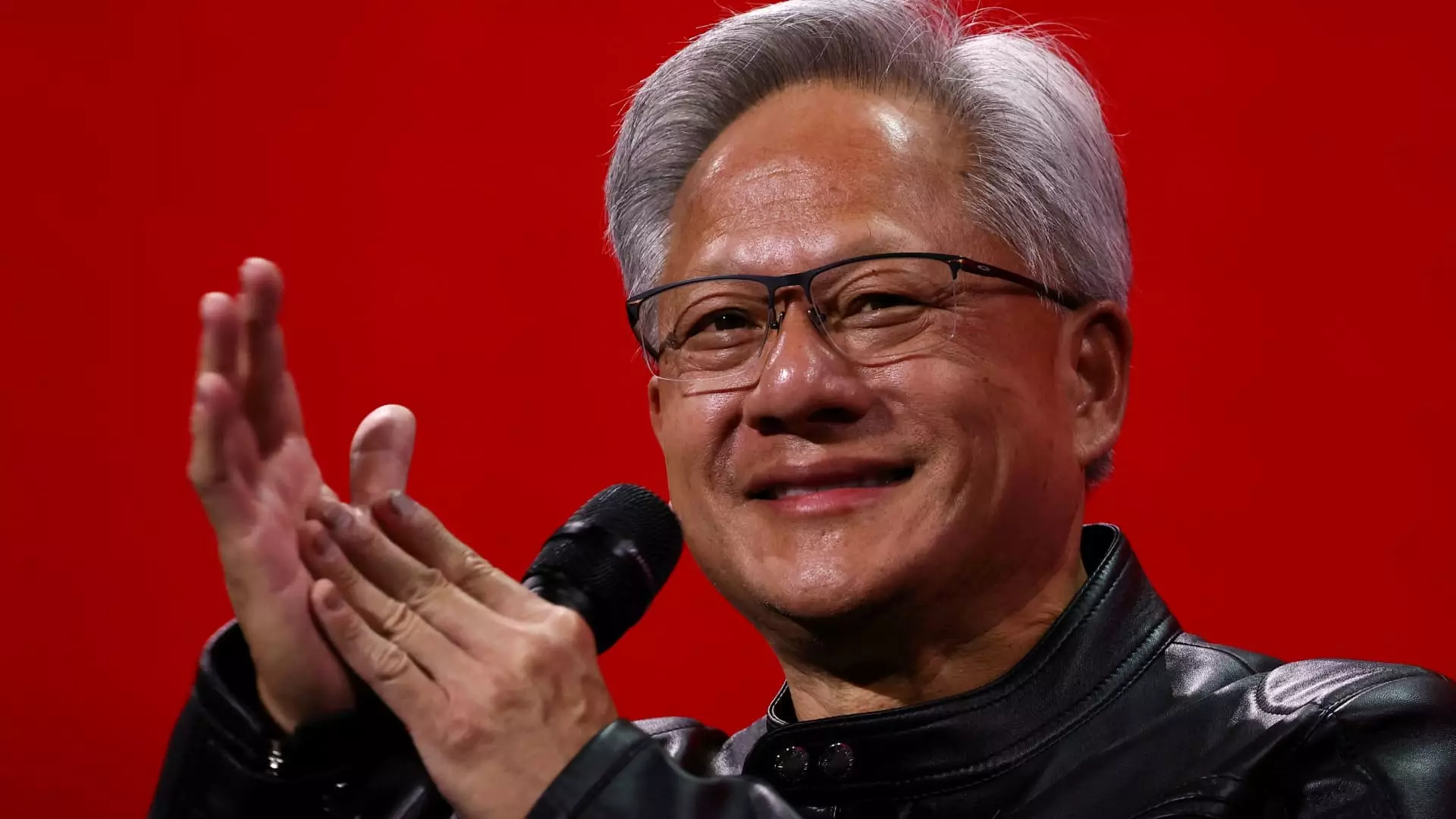Nvidia’s recent ascendancy to a $4 trillion valuation has sent shockwaves through the financial world. It’s a remarkable milestone—something unseen before in corporate history. Yet, beneath the surface of this technological triumph lies a deeper concern about the sustainability of such a rally. This acceleration, while thrilling for shareholders and industry observers, could be masking underlying vulnerabilities that threaten to destabilize the optimism. Market euphoria often blinds investors to imminent risks, and Nvidia’s meteoric climb exemplifies this phenomenon. It raises the question: Is this ascent a testament to genuine long-term value, or is it a reckless gamble driven by speculative fervor?
The Paradox of Innovation and Overvaluation
In the case of Nvidia, the company’s leadership—particularly CEO Jensen Huang—has fostered an environment of relentless innovation. Over just two years, Nvidia evolved from a trillion-dollar behemoth to the first $4 trillion enterprise ever recorded. This rapid valuation shift can tempt even the most prudent investors into thinking that Nvidia’s sector dominance guarantees continued growth. However, this phenomenon reveals a paradox: technological leadership does not always translate into sustained market expansion. The surge appears overhyped, echoing the dot-com bubble where innovation was mistaken for invincibility. Stock prices have become detached from fundamentals, risking a correction that could be severe once profit-taking begins.
The Risks of Chasing Trends in an Overheated Market
For investors who have ridden Nvidia’s rise, the temptation to hold onto positions amidst new highs is understandable. Yet, this is precisely why a cautious approach rooted in risk management is critical. The adage “pigs get fat, hogs get slaughtered” is especially relevant here. The current momentum may blind investors to the signals of a potential pullback. Options strategies, such as risk reversals, serve as a prudent means to hedge against disappointing retracements. Particularly in a market where valuations have become disconnected from conventional benchmarks, it’s essential to remember that markets are cyclical—and today’s exuberance often spawns tomorrow’s correction.
The Dangers of Overconfidence and Leverage
The fact that Nvidia’s market capitalization surpassed giants like Apple and Microsoft underscores the shift of influence within the tech sector. But this dominance comes with added risks—chiefly, the danger of overconfidence. When investors leverage their positions or sell naked calls, they expose themselves to potentially catastrophic losses if a correction arrives unexpectedly. The recent trade involving a risk reversal—a combination of a sold call and a purchased put—reflects an effort to safeguard gains without abandoning the rally. Still, such strategies require discipline and a clear-eyed understanding of market dynamics. A disconnect persists between the company’s extraordinary valuation and the uncertain horizon of AI-driven growth.
Role of the Political and Economic Environment
While Nvidia currently faces few headwinds on the horizon, macroeconomic factors and geopolitical considerations could change the landscape swiftly. Regulatory scrutiny over AI technologies, trade tensions, or industry-specific disruptions could stoke volatility. Investors, especially those with a center-right wing liberal perspective that values free enterprise but advocates for cautious oversight, should recognize that unchecked market euphoria often invites policy corrections. The political environment can either serve as a stabilizing force or an accelerant for downturns—depending on future regulatory policies or geopolitical shifts.
Nvidia’s story of extraordinary growth exemplifies the power of innovation and bold corporate vision. At the same time, it underscores the perils of market excess and the hazards of overconfidence. While the promise of continued AI revolution and technological dominance is compelling, investors need to balance aspiration with a dose of skepticism. Market history warns us that such parabolic trends rarely end well if not tempered with prudent risk management. As valuations become increasingly detached from reality, a more moderate, cautious stance may ultimately serve the long-term investor better than succumbing to the headlong rush driven by greed and hype.


Leave a Reply